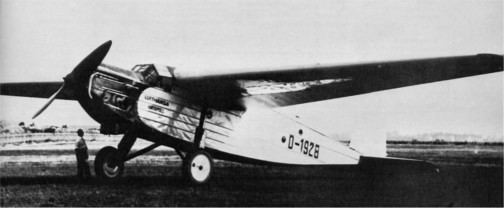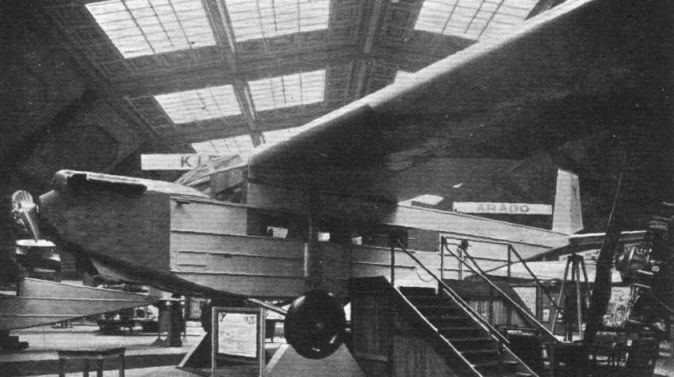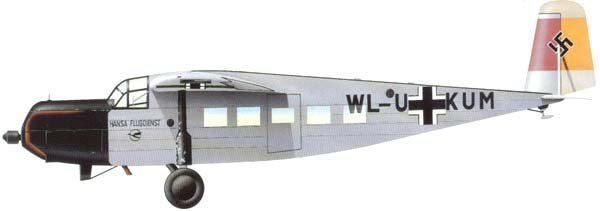Wingspan 26 m Introduced 1929 | Length 16 m Manufacturer Messerschmitt | |
 | ||
The BFW M.20 (also known as the Messerschmitt M 20 after the designer's surname) was a German single-engine, high-wing monoplane 10-seat passenger transport aircraft, developed in the late 1920s and early 1930s. Deutsche Luft Hansa used it throughout the 1930s on a variety of routes.
Contents
- Design and development
- Operational history
- The Messerschmitt Milch relationship
- Variants
- Operators
- Specifications M 20b
- References

Design and development

The M 20 was designed by Willy Messerschmitt at Bayerische Flugzeugwerke, primarily for use with Luft Hansa which had ordered two in advance of the first flight. It was a development of the BFW M.18d eight-seater equipped with a single 375 kW (500 hp) upright inline water-cooled BMW VIa engine. It had a high, cantilever wing based around a robust D-section box formed from a single dural spar and dural skin forward to the leading edge. The fuselage was all-metal, with a mostly dural frame covered with metal sheeting providing rectangular cross-section accommodation, with four square windows a side, for eight passengers. The single-axle main undercarriage was strutted vertically to the wing.

The aircraft made its maiden flight on 26 February 1928 but was lost when pilot Hans Hackmack bailed out at low altitude and was killed after the surface stripped from part of the wing. A second M.20 was flown on 3 August 1928, and became the first of two M.20a series to fly with Luft Hansa.

Encouraged by their performance, Luft Hansa ordered 12 more, enlarged, M.20b aircraft. These carried 10 passengers in a fuselage with five windows a side. It had dihedral on the wing and a more rounded vertical tail.
Operational history

The Luft Hansa M.20s entered service in 1929 on routes that went from Switzerland via Germany to the Netherlands and from Stuttgart via Marseille to Barcelona. From the mid-1930s, they were operating German internal and holiday routes. Two were still flying such routes in 1942.

One former Luft Hansa airframe went to Brazil with Varig in 1937. It crashed in 1948, the only M 20 to survive the war.
The Messerschmitt-Milch relationship
Hans Hackmack, who died in the first flight of the M 20, was a close friend of Erhard Milch, the head of Luft Hansa and the German civil aviation authorities. Milch was upset by the lack of response from Messerschmitt and this led to a lifelong hatred towards him. Milch eventually cancelled all contracts with Messerschmitt and forced BFW into bankruptcy in 1931. However, the German re-armament programs and Messerschmitt's friendship with Hugo Junkers prevented a stagnation of the careers of him and BFW, which was started again in 1933. Milch still prevented Messerschmitt's takeover of the BFW until 1938, hence the designation "Bf" of early Messerschmitt designs.
Variants
Operators
Specifications (M 20b)
Data from
General characteristics
Performance
